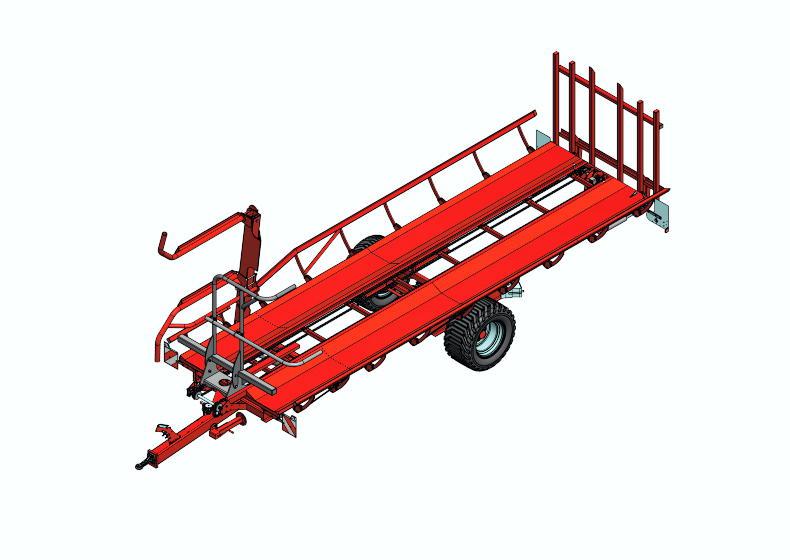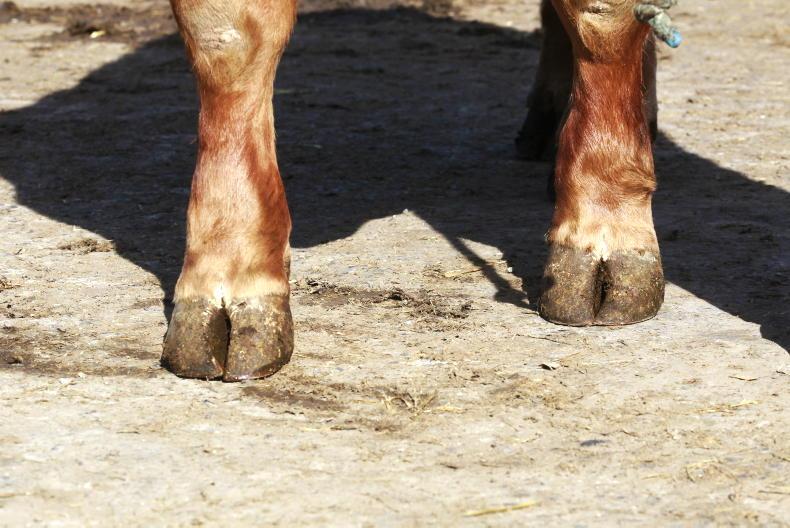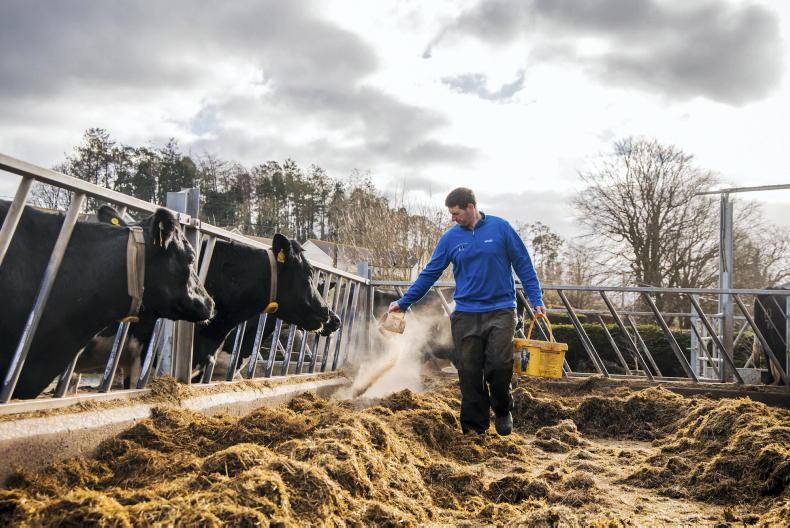For the majority of livestock farmers across NI, grass silage is either ensiled in a clamp or as bales. In most cases, clamp silage is made by using the services of a contractor with a forage harvester, although forage wagons have become more popular in recent years.
For farmers making baled silage, again contractors are commonly employed to carry out such work, although a sizeable percentage of farmers have their own baling outfit.
Regardless of which method is used to make silage, both options come at a cost, and this year, those silage expenses will be a lot higher than before.
Question
This poses the question: which option is more cost-effective for making silage – putting grass in the pit or making bales?
When harvesting higher yields of grass, pit silage normally is more cost effective than bales, but there is a tipping point when it makes economic sense to bale up the crop.
With many farmers choosing not to purchase any fertiliser this spring, there will be plenty of light crops of first-cut silage harvested in the coming weeks.
Other factors
But while cost drives most farming decisions, there are other factors to consider. For example, not everyone has a pit for ensiling grass, so bales are the only option.
This is a common occurrence on many out-farms. Having bales stacked in the yard is a more practical alternative when compared to driving back and forward between yards with a shear grab or diet feeder.
For farms carrying lower stock numbers or harvesting a small area of first-cut silage, bales will again be more practical. It is also a good way of controlling surplus grass on grazing swards.
On the downside, feeding bales is more labour intensive than pit silage and the area required for storage is much greater compared to a clamp.
There is also the issue of waste plastic to deal with, which also has an associated cost.
Silage quality
When it comes to silage quality, while the feed value of bale or pit silage will ultimately depend on the type of grass harvested, where dry matters are high, it can be more difficult to ensure good fermentation in a pit. Previous research has shown that cattle intakes will normally be higher when grass of the same quality is fed as bales rather than from a silage clamp.
The amount of waste silage associated with bales is also lower, so there is a better return on fertiliser and contractor costs.
Overall, a lot of these factors are impossible to put a monetary value on, and in many cases, the decision to go with bales or a clamp will be down to issues other than cost.
Costs compared across 50ac
To make some form of comparison between the costs of making bales versus pit silage, we have used an example of a farmer cutting 50ac of first-cut silage.
Our example does not include the cost of fertiliser, as it is assumed that the same amount is spread in both scenarios.
There is also no account taken of the expense associated with building a new silage pit, which ultimately would fundamentally change the decision on whether to go with bales or pit silage. The examples simply consider direct harvesting costs in 2022.
In the first example, a contractor is employed to ensile grass in the clamp with a self-propelled forage harvester at a cost of £90/ac. This includes mowing, raking, lifting and buckraking grass.
The alternative is opting to use a contractor to bale the silage. Mowing and raking is likely to be charged at around £25/ac this summer.
The cost of then making each bale will be in the region of £10 to £12, including plastic. Lifting, drawing and stacking bales adds another £1/bale on a short draw.
Direct costs
Under option one, 50ac ensiled at a cost of £90/ac comes to £4,500.
In option two, assuming 10 bales/ac, the cost per bale from mowing, raking, baling, wrapping and stacking is £14.50. Over 50ac, this comes to £7,250, which is a significantly higher expense for the farmer.
Yield
But as grass yields get lower, then bales become a more viable option. Table 1 outlines the cost comparison at a range of yields.
The example assumes bales weigh on average 850kg, but it is important to remember that older balers will produce a lighter bale, which further increases costs as more handling and plastic is required.
As shown in the table, at the outlined contractor charges, bales start to be become more cost-effective than pit silage around the five to six bales per acre mark, or 4t to 5t/ac fresh weight.
Increasing the contractor charge to £100/ac for pit silage lifts the break-even point to between 5t and 6t/ac, or six to seven bales per acre.
Second cuts
Most first cuts on productive, moderate to well-fertilised swards harvested in late May to mid-June will most likely exceed such yields. However, for farmers harvesting second-cut silage later in the summer, then bales may be the more cost-effective option.
Read more
Beginners' tips for setting up grazing paddocks
Dairy farmers excluded from €1,000 silage scheme
For the majority of livestock farmers across NI, grass silage is either ensiled in a clamp or as bales. In most cases, clamp silage is made by using the services of a contractor with a forage harvester, although forage wagons have become more popular in recent years.
For farmers making baled silage, again contractors are commonly employed to carry out such work, although a sizeable percentage of farmers have their own baling outfit.
Regardless of which method is used to make silage, both options come at a cost, and this year, those silage expenses will be a lot higher than before.
Question
This poses the question: which option is more cost-effective for making silage – putting grass in the pit or making bales?
When harvesting higher yields of grass, pit silage normally is more cost effective than bales, but there is a tipping point when it makes economic sense to bale up the crop.
With many farmers choosing not to purchase any fertiliser this spring, there will be plenty of light crops of first-cut silage harvested in the coming weeks.
Other factors
But while cost drives most farming decisions, there are other factors to consider. For example, not everyone has a pit for ensiling grass, so bales are the only option.
This is a common occurrence on many out-farms. Having bales stacked in the yard is a more practical alternative when compared to driving back and forward between yards with a shear grab or diet feeder.
For farms carrying lower stock numbers or harvesting a small area of first-cut silage, bales will again be more practical. It is also a good way of controlling surplus grass on grazing swards.
On the downside, feeding bales is more labour intensive than pit silage and the area required for storage is much greater compared to a clamp.
There is also the issue of waste plastic to deal with, which also has an associated cost.
Silage quality
When it comes to silage quality, while the feed value of bale or pit silage will ultimately depend on the type of grass harvested, where dry matters are high, it can be more difficult to ensure good fermentation in a pit. Previous research has shown that cattle intakes will normally be higher when grass of the same quality is fed as bales rather than from a silage clamp.
The amount of waste silage associated with bales is also lower, so there is a better return on fertiliser and contractor costs.
Overall, a lot of these factors are impossible to put a monetary value on, and in many cases, the decision to go with bales or a clamp will be down to issues other than cost.
Costs compared across 50ac
To make some form of comparison between the costs of making bales versus pit silage, we have used an example of a farmer cutting 50ac of first-cut silage.
Our example does not include the cost of fertiliser, as it is assumed that the same amount is spread in both scenarios.
There is also no account taken of the expense associated with building a new silage pit, which ultimately would fundamentally change the decision on whether to go with bales or pit silage. The examples simply consider direct harvesting costs in 2022.
In the first example, a contractor is employed to ensile grass in the clamp with a self-propelled forage harvester at a cost of £90/ac. This includes mowing, raking, lifting and buckraking grass.
The alternative is opting to use a contractor to bale the silage. Mowing and raking is likely to be charged at around £25/ac this summer.
The cost of then making each bale will be in the region of £10 to £12, including plastic. Lifting, drawing and stacking bales adds another £1/bale on a short draw.
Direct costs
Under option one, 50ac ensiled at a cost of £90/ac comes to £4,500.
In option two, assuming 10 bales/ac, the cost per bale from mowing, raking, baling, wrapping and stacking is £14.50. Over 50ac, this comes to £7,250, which is a significantly higher expense for the farmer.
Yield
But as grass yields get lower, then bales become a more viable option. Table 1 outlines the cost comparison at a range of yields.
The example assumes bales weigh on average 850kg, but it is important to remember that older balers will produce a lighter bale, which further increases costs as more handling and plastic is required.
As shown in the table, at the outlined contractor charges, bales start to be become more cost-effective than pit silage around the five to six bales per acre mark, or 4t to 5t/ac fresh weight.
Increasing the contractor charge to £100/ac for pit silage lifts the break-even point to between 5t and 6t/ac, or six to seven bales per acre.
Second cuts
Most first cuts on productive, moderate to well-fertilised swards harvested in late May to mid-June will most likely exceed such yields. However, for farmers harvesting second-cut silage later in the summer, then bales may be the more cost-effective option.
Read more
Beginners' tips for setting up grazing paddocks
Dairy farmers excluded from €1,000 silage scheme









SHARING OPTIONS